ES6 class -- Class 的方法
Posted chenyingying0
tags:
篇首语:本文由小常识网(cha138.com)小编为大家整理,主要介绍了ES6 class -- Class 的方法相关的知识,希望对你有一定的参考价值。
静态方法与静态属性
不会被类的实例所拥有,只有类自身拥有的属性和方法
只能通过类来调用、
static 关键字(静态方法)
类名.属性名=属性值(静态属性)
//车类 class Car{ //构造函数 constructor(wheel,color,length,width){//接收参数 //给属性赋值,this指向当前实例化的结果 this.wheel=wheel; this.color=color; this.length=length; this.width=width; this.speed=0; } //方法 speedUp(){ this.speed+=1; } //静态方法 static repair(car){ console.log("我要修车,车是:"+car); } } //实例化,类->对象 let c=new Car(3,"#abcdef",20,40); Car.repair("我的兰博基尼");//调用静态方法 c.repair("我的兰博基尼");//实例上没有静态方法,无法调用

普通方法与静态方法重名,互不影响
//车类 class Car{ //构造函数 constructor(wheel,color,length,width){//接收参数 //给属性赋值,this指向当前实例化的结果 this.wheel=wheel; this.color=color; this.length=length; this.width=width; this.speed=0; this.errors=0; } //方法 speedUp(){ this.speed+=1; } //自检 checker(){ console.log("我要自检"); //... if(this.errors===0){ console.log("检测完毕,一切正常"); } } //静态方法 static checker(car){ console.log("我要抽查"); } } //实例化,类->对象 let c=new Car(3,"#abcdef",20,40); Car.checker();//调用静态方法 c.checker();//调用普通方法

//车类 class Car{ //构造函数 constructor(){//接收参数 Car.totolCar++;//操作静态属性,用来计算被实例化的次数 //给属性赋值,this指向当前实例化的结果 this.speed=0; this.errors=0; } //方法 speedUp(){ this.speed+=1; } //自检 checker(){ console.log("我要自检"); //... if(this.errors===0){ console.log("检测完毕,一切正常"); } } //静态方法 static checker(car){ console.log("我要抽查"); } } //静态属性 Car.totolCar=0; //实例化,类->对象 let c=new Car(); console.log(Car.totolCar);//访问静态属性 new Car(); new Car(); new Car(); Car.checker();//调用静态方法 c.checker();//调用普通方法 console.log(Car.totolCar);//再次访问静态属性

静态属性可以用来储存默认配置
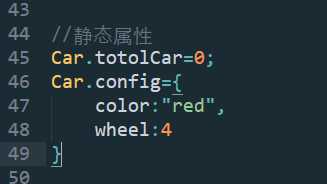
静态属性和静态方法的具体应用场景
//角色类 class Character{ //构造函数接收参数,实例化时默认会执行 constructor(pro){ this.pro=pro;//职业 } } //配置项(静态属性) Character.config={ //职业映射表 profession:{ "咒术师":1, "弓箭手":2 } } let c=new Character(Character.config.profession["咒术师"]);

class Person{ //静态方法 //程序员转普通人 static format(programmer){ programmer.bf=true; programmer.hair=true; } } //程序员类 class Programmer{ constructor(){ this.bf=false;//没有男朋友 this.hair=false;//没有头发 } } let p=new Programmer(); console.log(p); Person.format(p);//调用静态方法 console.log(p);

类表达式
//函数表达式 const a=function(){ } //函数声明 function a2(){ } //类的声明 class Myclass{ } //类表达式 const Myclass2=class{ constructor(){ console.log("我是鸽手,咕咕咕"); } } //也可以class后面跟个类名 const Myclass3=class M{ constructor(){ console.log(M===Myclass3);//内部可以访问到 //作用:如果Myclass3修改了类名,内部的代码不需要修改,因为用的是内部的类名 M.a=1; console.log("我是鸽手,咕咕咕"); } } //console.log("外部:"+M);//报错,外部无法访问到 new Myclass3();

自执行的类(实际情况基本用不到)
//自执行的类 const Person=new class P{ constructor(){ console.log(P); } }();
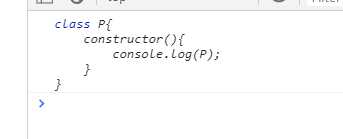
getter 与 setter
类似于给属性提供钩子,在获取和设置属性时做一些额外的事情
首先看看ES5中getter和setter,一般有两种方式
1、在对象字面量中书写get/set方法
const obj={ name:"", get name(){ return this.name; }, set name(val){ this.name=val; } } obj.name;
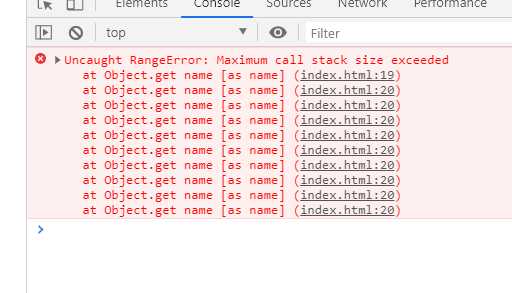
这种写法会造成栈内存溢出,因此get name()调用后,return name再次触发get name() ,无线循环
因此需要修改代码,使get name()和name不同名
const obj={ _name:"", get name(){ return this._name; }, set name(val){ this._name=val; } } obj.name=222;//调用set name(val) console.log(obj); console.log(obj.name);//调用get name()
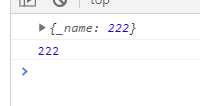
2、Object.defineProperty
var obj={ _name:"" } Object.defineProperty(obj,"age",{ value:18 }) console.log(obj); //遍历属性时发现age属性无法被遍历 for(var i in obj){ console.log(i); }

遍历属性时发现age没有被遍历,这是因为定义属性时没有添加可被枚举的描述符
添加之后即可被遍历
var obj={ _name:"" } Object.defineProperty(obj,"age",{ value:18, enumerable:true//可被枚举 }) console.log(obj); //遍历属性时发现age属性无法被遍历 for(var i in obj){ console.log(i); }

可以利用此特性为name书写get和set方法
var obj={ _name:"" } Object.defineProperty(obj,"name",{ get:function(){ return this._name; }, set:function(val){ this._name=val; } }) obj.name=10; console.log(obj.name);

ES6中使用getter和setter
//ES6中getter和setter class Person{ constructor(){ this._name="" } get name(){ return `我的名字是: ${ this._name }` } set name(val){ this._name=val } } const p=new Person(); p.name="cyy";//调用setter console.log(p.name);//调用getter

模拟一个小案例:
//ES6中getter和setter的应用 class AudioPlayer{ constructor(){ // 0-暂停 | 1-播放 | 2-加载中 this._status=0 this.status=0 //使用setter,默认是0 this.init() } init(){ const audio=new Audio() audio.src="url" audio.canplay=()=>{//如果不使用箭头函数,则this会指向audio;使用后指向当前对象 audio.play() //使用setter this.status=1 } } get status(){ return this._status } set status(val){ const STATUS_MAP={ 0:"暂停", 1:"播放", 2:"加载中" } document.querySelector("#app .play-btn").innerText=STATUS_MAP[val] this._status=val } } const a=new AudioPlayer();

输入出生年份并自动计算当前年龄的效果
//定义一个类,设置默认的年龄为18 class Age{ constructor(){ this._age=18; } get age(){ return this._age; } set age(year){ //若是设置的年份不是四位数,则采用默认的年龄18 if(year.length!==4) return; this._age=2020-parseInt(year)+1; } } //使用变量接收输入的年份 let year=prompt("请输入出生年份") //如果获取到填写的数据 if (year!=null && year!="") { let a=new Age(); a.age=year document.write("今年的年龄是:"+a.age); }


name属性与new.target属性
//name 返回类名 //不常用 class Age{} console.log(Age.name) //类的表达式 const Age2=class{} console.log(Age2.name) //类的表达式(存在内部类名),则返回内部类名 const Age3=class A{} console.log(Age3.name)

//new.target 指向new关键字后面的类 //不能直接访问,必须在类或者类的构造函数中才能访问 //console.log(new.target)//报错 class Car{ constructor(){ console.log(new.target) } } new Car()
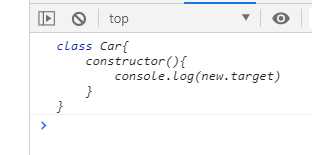
new.target 作用
语法糖(Syntactic sugar),也译为糖衣语法,是由英国计算机科学家彼得·约翰·兰达(Peter J. Landin)发明的一个术语
指计算机语言中添加的某种语法,这种语法对语言的功能并没有影响,但是更方便程序员使用。
通常来说使用语法糖能够增加程序的可读性,从而减少程序代码出错的机会。
//语法糖:ES5中模拟类的另一种写法(即下面这种代码的语法糖) function Car(){ //属性 this... } //方法 Car.prototype.xxx=function(){ }
普通的函数也可以使用new.target
function fn(){ console.log(new.target) } fn()//返回new关键字后面的,如果没有就是undefined new fn()
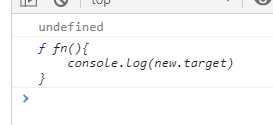
function Fn(){ if(new.target!==Fn){ throw("必须使用new关键字调用") } } Fn()//返回new关键字后面的,如果没有就是undefined new Fn()

也可以使用instanceof实现相同效果
function Fn(){ if(!(this instanceof Fn)){ throw("必须使用new关键字调用") } } Fn()//返回new关键字后面的,如果没有就是undefined new Fn()

let Fnn=class Fn{ constructor(){ this.name="cyy" } } let f=new Fnn() console.log(f.name)//18 console.log(Fnn.name)//Fn

在ES5中模拟类
其实js是不支持类的,只是用构造函数模拟类
//ES5中构造函数跟函数一样 //只是调用时添加了new关键字,就会被当做构造函数 //如果没有返回值,就会返回对象 function Person(name,age){ this.name=name; this.age=age; } console.log(new Person("cyy",18));

用new关键字为什么会返回对象
//用new关键字为什么会返回对象 //1、创建一个空对象 //2、把构造函数的prototype属性作为空对象的原型 //3、把this赋值为这个空对象 //4、执行函数 //5、如果没有返回值,就返回this function Person(name,age){ this.name=name; this.age=age; } console.log(new Person("cyy",18));

自己写一个函数模拟构造函数的效果
function Constructor(fn,args){ //1、创建一个空对象 //2、把构造函数的prototype属性作为空对象的原型 var _this=Object.create(fn.prototype); //3、把this赋值为这个空对象 //4、执行函数 var res=fn.apply(_this,args); //5、如果没有返回值,就返回this return res?res:_this; } function Person(name,age){ this.name=name; this.age=age; } Person.prototype.say=function(){ console.log("我叫"+this.name+",我今年"+this.age+"岁"); } //把函数变为构造函数 var person=Constructor(Person,["cyy",18]); console.log(person);//返回一个对象

以上是关于ES6 class -- Class 的方法的主要内容,如果未能解决你的问题,请参考以下文章